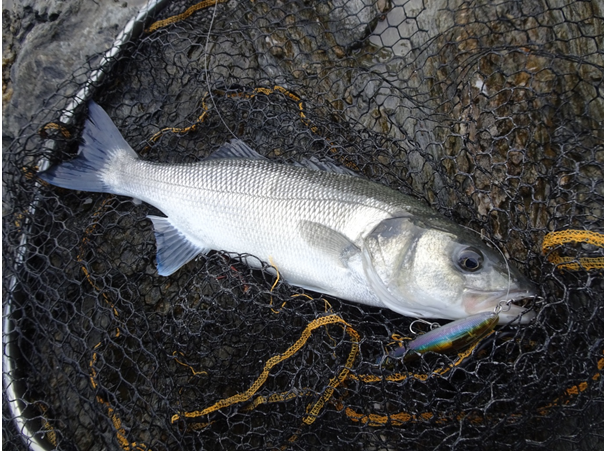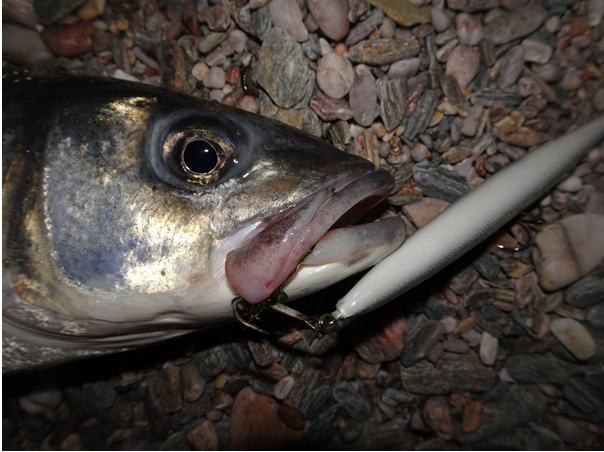‘Cabin Fever’ Why it might be good for you...
Posted by Marc Cowling (South Devon Bass Guide) on 6th Jan 2019

I can’t pretend that anything beats actually being out there - clambering around to a ‘secret’ secluded cove, holding a rod and working the bass lure in anticipation of that heart stopping moment when a bass slams into it.! But... Is it possible that a period of time when you’re not completely immersed in your pastime, and where you can take a step back and place a few of the elements into perspective serving to improve you as a bass lure angler? Here’s my take on why I think cabin fever might not be so bad after all!
Clear out
There are some lures I currently utilise that I cannot imagine ever being able to do without, yet if you asked me what those lures were ten or even five years ago then only a couple of them remain today - the Tackle House Feed Shallow 128, Rapala J11 and J13being prime examples. What I’m getting at is innovation, recommendations, catches and ‘fashion’ to a certain extent dictates what many of us will purchase when it comes to the next batch of shiny new lures and, of course, rods and reels. There is a balance to strike however, as although a clear out (via eBay or a designated Facebook Group) can provide you with the money to supplement your ‘next generation’ of prized possessions and potential bass ‘magnets’ you need to be utterly ruthless, but tactical at the same time! Not easy...

Some lures (such as the Rapala J11 and J13 above) stand the test of time by virtue of being almost unique in what they can ‘do’ for you in certain situations.
As previously stated, personally, I only take with me bass lures that perform a specific role and I intend to write a series of blog posts about which lures on my own site South Devon Bass Guide over the winter. Ultimately, really, really have a think about the lures you own, for what purpose they are designed, and when and where you utilised them as part of your own ‘review’ of the previous season - then, if there are potential gaps in your weaponry can you delve into the marked, so to speak, ready for the new season. It goes without saying that some bass lures will remain in there for a lot longer than others because they catch you bass, which in turn breeds confidence in them, but don’t be nostalgic...
Analyse
If you’ve kept detailed records relating to tide heights (tidal range), water clarity, sea state, air pressure, sea temperature, state of tide etc. then now is the time to start pouring over them. If something appears to be a pattern in bass behaviour then note it and test out that theory at an opportune time. I find my photographs and release videos are especially useful in this context as they would have recorded the exact time of a capture that I can then cross examine with the state of tide.

In my early days of learning how to catch bass on lures, I would cast into areas that just ‘looked good’ because of the way the sea was interacting with the seabed (aerated, confused, eddies and calmer/flatter patches)- it was only later that I began to realise ‘why’ bass were located there on a regular basis.
Then there are the marks and/or venues themselves. I am positive that many decent sized bass would have been hooked, landed and returned this season by anglers who may not have had a full appreciation of the composition of the seabed. Again, the winter period is the time to head out on one of those cold, calm days when a low spring tide has revealed what could be a fairly obvious feature and a reason why that bass (and possibly many more) once you can actually stand above or within it.
Armed with this information, if there is a specific feature such as a gully, rock pool, sandy patch, weed bed, depression, scour, rock formation or ledge that has become apparent, then you can go looking for similar marks - this is how I built up my portfolio of over 160 very precise ‘marks’ at the last count.
Test
Finally (and this relates to where you fish, how you approach it and deciding which lures to retain indefinitely, keep for another season, sell or purchase) meticulously undertake understanding what each lure you possess is capable of and how it reacts when being retrieved (fast, slow, twitched, paused, drifted etc.) in a multitude of sea conditions. Thorough testing such as this, when the probability of a bass hitting it is low may seem bonkers, but later in the year when they are about is when you want to have a clear head and be in a position to make well-informed decisions about matching the lure choice to the conditions in conjunction with what bass may well be preying upon.

In the past two seasons, the Jim’s Lures Needlefish have accounted for more 5lb+ bass than any other when fished in darkness. However, I learnt ‘how’ to use them in the depths of winter and during daylight.
All of the above links into the other, as if you have intimate knowledge and personal experience of a particular reef, cove, beach or estuary (what prey items live there and when the bass are more likely to be present) then you will be in with a greater chance of picking the right tool for the job, and more importantly, how to ‘make’ that piece of plastic, rubber, wood or metal look and behave like the real thing.
Strangely enough, now is the time when you can make significant strides forward, and you never know - you might just catch a late/early bass too!
Marc Cowling is a successful bass lure fishing guide based in South Devon.
